Signatories on the Banco de Londres y México notes
Interventor
|
Pedro Landázuri was born in Guadajalara, Jalisco on 28 January 1832. A member of the Liberal party, he fought against the French as a colonel and was President Lerdo de Tejada’s private secretary. He joined the Consular Service in 1874 and served in Germany from 1874 to 1878. He was a state deputy in Jalisco 1867–1868, federal deputy from Jalisco 1869-1871, federal deputy from San Luis Potosí 1878-1880 and from Jalisco 1886-1905. Landázuri was appointed Interventor on 13 October 1886informe of interventor Landázuri, 27 July 1897 in Memoria de las Instituciones de Crédito, correspondientes a los años 1897-1898-1899, tomo I. He died on 29 November 1905. |
 |
|
|
 |
|
Francisco Cortina é Icaza was born in Mexico City on 25 June 1841 and was a member of the city’s economic and political elite. His daughter, Guadalupe Cortina Cuevas married Andrés Bermejillo, the son of José María Bermejillo. Cortina Icaza was Interventor of the Banco Central Mexicano but transferred to the Banco de Londres y México in May 1906 when the previous holder resignedThe Mexican Herald, Vol. XXII, No. 83, 22 May 1906. He died in Mexico City on 1 January 1915. |
 |
| M. Elguera |  |
Cajero
|
Herbert Champion Jones was born in Croydon, England in 1864 to William Anastasius Jones, an early director of the Banco de Londres, México y Sud América, and Catherine Susanna Valentine Bates. He was cajero of the bank but on his resignation in 1890 was appointed sub-gerente of the Trust, Loan & Agency Co. of Mexico, Limited/Compañía Anglo-Mexicana de Préstamos y Agencias, a company involved in all sorts of financial transactions in Mexico and in LondonEl Economista Mexicano, Tomo IX, Núm. 12, 26 April 1890. He left this company to return to England, “whence he came back after a lapse of years on a special mission, in the execution of which he was successful; but on his way home he contracted a sickness from which he never entirely recovered. Eventually, he went to Lima, Peru, in the interest of an English syndicate, where he remained for several yearsHe was manager of the Backus and Johnson brewery company in Lima (The Mexican Herald, Vol. XV, No. 322, 22 July 1902), coming back to Mexico again about twelve months ago ostensibly as the representative of commercial firms, but having in hand, at the same time, a large transaction, which, however, at the time of his death had not materialized."The Mexican Herald, Vol. XXIX, No. 134, 12 January 1910 He passed away of chronic neuritis on 11 January 1910 in Mexico Cityibid.. |
 |
| Rafael Herrera Zamora signed balance sheets from April 1893 to June 1898. |  |
| Julio Aspel | 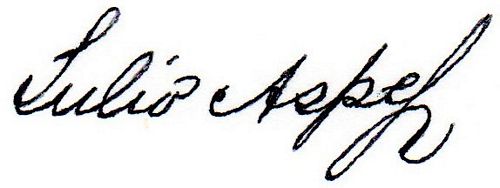 |
Consejero
|
Andres Bermejillo was the son of José María Bermejillo. He married the daughter of Francisco Cortina é Icaza. Andres Bermejillo was also Secretary of La Latino Americana, the life insurance company, a Director of la Casa de Cambio y Comisión and vicepresident of the Compañía Minera Los Peñoles. |
 |
|
During the Porfiriato he was appointed head of the Tesorería General de la Federación. Later he held several positions within Porfirio Díaz’ cabinet. He was Secretary of Communications and Public Works from 1891 to 1895, Secretary of the Interior from 1895 to 1903, Secretary of Development, Colonization and Industry from 1903 to 1905 and Secretary of War and Navy from 1905 to 1911. In 1905 he was promoted to the rank of Major General. He died in Coyoacán on 14 December 1913. |
 |
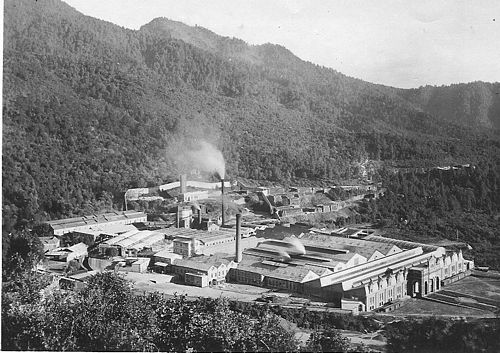
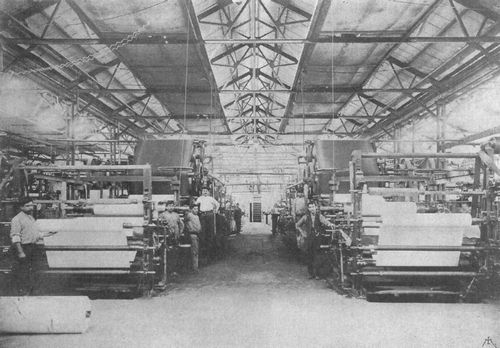
Compañía Papelera San Rafael y Anexas
|
José Sánchez Ramos and Thomas Braniff organized the joint-stock company, San Rafael y Anexas, S. A., on 1 March 1894, with an initial issue of one million pesos in stock. In 1897 the company raised its capital to 1.5 million and in 1898 to five million. San Rafael undertook an aggressive strategy of mergers that gave the firm a monopoly in the production of newsprint, the most lucrative product line in the paper marketTómas Braniff and his partner, José Sánchez Ramos, installed a 10-ton hydro-electric propelled paper factory at the foot of the Iztaccihuatl volcano, and immediately in the centre of the raw material as represented by a vast area of virgin forest. On Tómas’ death his two sons, Oscar and Tómas, entered upon the management of the company, while they were joined by Julio M. Limantour, The whole of the Company's important water-power concessions were developed, the capacity of the factory was doubled, and the best English, Norwegian and German paper-makers were placed at the head of the technical departments, which, in conjunction with the practical administration of José de la Macorra, the general manager, brought about a complete transformation in the paper-manufacturing industry of Mexico. The San Rafael Paper Works produced enough paper, of all grades, to supply the general market of Mexico. San Rafael y Anexas acquired several other factories: in Belén, Santa Teresa and Zavaleta, in Puebla, and El Progreso Industrial in the Estado de México. Its board over time included Henri (Enrique) Tron, Thomas Braniff, Porfirio Díaz, jr., Fernando Pimental y Fagoaga, and Julio M. Limantour. Sánchez Ramos was also involved in the Compañía Banco Refaccionario de Chihuahua, Caja de Préstamos para Obras de Irrigación, and the mining companies Socavón de San Fernando, Santa Inés y la Nueva, San Luis El Moral, Compañía Beneficiadora de Metales de Zacualpan. |
 |
|
As well as his interest in the Banco de Londres y México he was a member of the Banco Central Mexicano and Compañía Bancaria de Paris y México. He also was a shareholder in the Compañía Industrial de Orizaba, S.A., the Fábrica de Papel San Rafael, the Compañia Industrial San Idelfonso, the Compañia Eléctrica e Irrigadora del Estado de Hidalgo, the Compañia Ferrocarril Eléctrico de Lerdo, the Compañia Manufacturera de Jabón La Unión, and the Fundición de Fierro y Acero de MonterreyThe first steel company in all of Latin America, La Fundidora de Fierro y Acero de Monterrey was launched in 1903 by the major local families and some foreign capital represented by the French Leon Honorat and León Signoret, the Spaniard Antonio Basagoiti and the American Thomas Braniff. . Thanks to this last company Signoret was linked with members of a powerful group of industrialists in the north of the country, such as Vicente Ferrara and Patricio Milmo. Signoret was known to have close ties to the Porfiristas, particularly Finance Minister Limantour, who was also a Barcelonnette. He died in Barcelonnette, France, on 30 August 1919. |
 |
| Remigio Noriega |  |
| Francisco Espinosa |  |

Thomas (Tomás) H. Braniff for a detailed account of his family see María del Carmen Collado, La Burguesía Mexicana. El emporio Braniff y su participación política 1865-1920, México, 1987 was born on Staten Island, New York, in 1830, the son of Irish immigrants. In 1863 he came to Mexico as a senior employee of Smith Knight & Company to work on the construction of the Mexico-Veracruz railway. When emperor Maximilian was defeated Braniff managed to become a shareholder, and in 1874 a director of the railroad company, a position he retained until his death. He was one of the business magnates of his time, investing heavily through his corporations in the most dynamic and up-to-date industries of the day, for example in 1890 in the Compañía Fundidora de Fierro y Acero de Monterrey. In 1891 in partnership with Juan B. Ebrard, José Spitalier, José Sánchez Ramos, Roberto Núñez and Fernando Pimentel y Fagoaga he formed the Fábrica de Papel San Rafael y Anexas S.A., owing 33% of the shares. In 1892 he became associated with a group of prosperous French merchants, Enrique Tron, Eugenio Roux and J.B. Ebrard, to integrate the San Lorenzo factory, the factory of Cerritos and Río Blanco, into the Compañía Industrial de Orizaba S.A., the largest textile company in the country. He was a minor investor in the Compañía Eléctrica e Irrigadora in the state of Hidalgo, in the Compañía Cigarrera el Buen Tono, and in the Fábrica de Tejidos San Ildefonso, a producer of wool textiles. His investments in real estate were also large, owning many lots on both sides of Paseo de la Reforma. Braniff had shares in the Banco de Londres y México and in the Banco Internacional e Hipotecario. Braniff increased his capital thanks to his excellent relationship with President Díaz and his closest associates, and also with Mexico's Barcelonnettes, an important group of investors born in the Valley of Barcelonnette, France. The alliance with this French group helped him to find financial support from their Société Financière pour l’industrie du Mexique, a company that placed shares in Paris and Geneva. Braniff had five sons and one daughter. George married into the Lascuráins, an entrepreneurial and political family; Óscar married Guadalupe Cánovas, owner of the Hacienda de Jalpa estate in Guanajuato; Tomás married Elena Amor, heir to the Hacienda de Monte Blanco estate in Veracruz; Arturo married into the wealthy Garamendi family; and Alberto married the well-to-do Luz Franyutti. Braniff s daughter, Lorenza, married Spanish noble Luis Bermejillo, the Marquis of Mohernando, who was related to the Mexican branch of the entrepreneurial Bermejillo family, which helped found the Partido Católico. When he died in 1905, he left a fortune of over nine million pesos. |
 |
|
He was president of the French Chamber of Commerce in Mexico. He was part of the monetary commission that worked with the Minister of Finance José Yves Limantour, during the government of Porfirio Díaz (1876-1910). He was also an advisor to the French Ministry of Foreign Trade and a Knight of the Legion of Honour from 1906. |
 |
|
He was a federal deputy from Oaxaca (1884 – 1894 and 1896 – 1912) or from Guanajuato for the two years 1894 – 1896. He served as President of Congress in 1898 and 1906. He was a leader of the Científicos and supported Ramón Corral as a successor to Porfirio Díaz. He was on the board of the Pan American Company and of Pan American Railway. Rosendo Pineda was appointed to the bank’s board on 5 January 1910 to replace Luis Barroso Arias who had resignedDiario Oficial, Tomo CVI, Núm. 56 January 1910. He died on 13 September 1914. |
 |
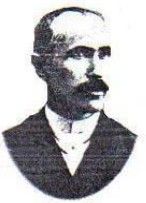 Jules Tron was Henri Tron's brother. Jules Tron was Henri Tron's brother. |
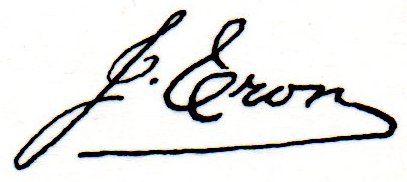 |
|
José Spitalier was appointed to the bank’s board on 5 January 1910 to replace Joaquín Baranda who had diedDiario Oficial, Tomo CVI, Núm. 5, 6 January 1910. By 1914 Spitalier was a shareholder in and manager (socio gerente} of the casa J. Ollivier, Sucs., and on 16 June was one of the founding directors of the Cía. Francesa de Petróleo “El Higo”, S. A.Cosmos, 1 July 1914. Another director was Federico G. Proal.. |
 |
|
Ignacio de la Torre y Mier was President Díaz' son-in-law. Ignacio de la Torre was involved in the Compañía Cigarrera Mexicana, Colonizadora de la Costa Oriental de Yucatán, and Mina Alacrán. He also shared partnerships with Weetman Pearson, and John Brittingham. |
 |
| José Sainz | 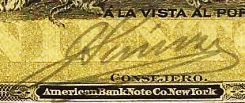 |
| Enrique Domenge |  |
Gerente
|
Waters was general manager until 1899. |
 |
 James Walker James Walker |
 |
|
Francisco Yarza Francisco Yarza resigned in January 1909 to be replaced by Guillermo Höpfner and William Bain MitchellEl Tiempo, 6 January 1909. |
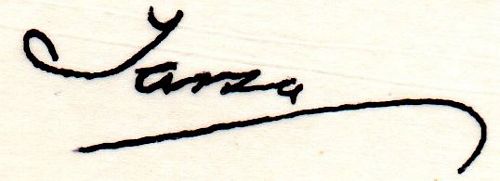 |
| William Bain Mitchell |  |
Sub-gerente
|
Guillermo Höpfner: In January 1909, when Francisco Yarza resigned as manager, the Junta Directiva decided that he should be replaced by Guillermo Höpfner and William B. Mitchell as joint SubgerentesEl Tiempo, 6 January 1909. In June 1916 Höpfner was arrested and sent to prision for refusing to accept notes of forced circulation but released when he and his board promised to accept them. However, a few days later, on 16 June, Höpfner and the bank’s boardJustino Tron, Emilio Pimental, Mariano Alegre, Enrique Domenge, Salvador M. Cancino, Augusto Gemini José Sáinz, Félix Martino, Javier Olivera, Alfredo Noriega, Federico Proal. V. Eleoro avoided imprisonment because he was sick were summoned to a meeting with the Comandante Militar, General Hill, as they were refusing to accept Veracruz notes in payment of a debt and demanding silver or gold or some other currency that gave them a sufficient guarantee. When they refused to accept Veracruz notes they were sent to prisonEl Pueblo, Año III, Tomo I, Núm. 590, 17 June 1916. By 1920 Höpfner was Contador of the Credito Español de México. S. A.Boletín de la Cámara Central Agrícola de México, Tomo I, Núm. 3, September 1920. |
 |

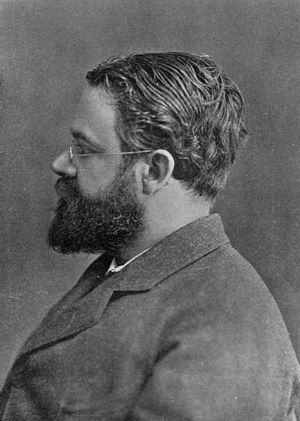 “Señor Licenciado Don Alfredo Chavero died in the City of Mexico, October 24, 1906. Señor Chavero was beyond question the dean of Mexican archeologists; but not only as an archeologist was he prominent - he was a lawyer of eminence, an active politician, a man of affairs, a brilliant orator, and a successful writer. Born in the City of Mexico, February 1, 1841, Alfredo Chavero began the active practice of law in his native city at the early age of twenty years, and in the year of his majority, 1862, was elected a deputy to Congress. He was a liberal in politics, and was associated with President Juarez during the period of the French invasion of Mexico under Maximilian. After the fall of the empire, in 1867, he entered journalism, thus beginning his career as a man of letters. Not being in sympathy with the administration of President Lerdo de Tejada, he went to Europe, returning when Lerdo de Tejada's term of office ceased, and serving under the new administration as sub-secretary to the Minister of Foreign Affairs. In 1871 he became governor of the Federal District, and for many years, until his death, was a member of the Chamber of Deputies, over which he presided at various times. He was long regarded as the most brilliant speaker in that body. Notwithstanding the demands of his political offices, Sefior Chavero found time to devote attention to numerous educational, administrative, and judicial organizations. He was professor of administrative law in the School of Commerce, a member of the commission that formed the commercial code, a director of the School of Commerce and of the College of Peace, Comptroller of the National Bank, a member of the permanent Arbitration Board at the Hague, a member of the Pan-American Congress held in Mexico, the perpetual secretary of the Statistical and Geographical Society of Mexico for more than forty years, the director of the National Museum of Mexico in 1903, and the holder of various other positions of national importance. Señor Chavero was a founder of the American Anthropological Association, and a member of the editorial board of the American Anthropologist from the time it became the Association's official organ. He was also a member of the Societe des Americanistes de Paris and of the American Antiquarian Society, and a corresponding member of the Real Academia Española de la Historia. He was president of the Mexican delegation to the Thirteenth International Congress of Americanists held at New York in 1902, and was one of the speakers on the subject of archeology at the International Congress of Arts and Sciences held at the Saint Louis Exposition in I904. On both of these occasions he made many warm friends in this country by his genial and courteous manner. Notwithstanding the many duties which Señor Chavero was called on to perform as a leading man of affairs, he found time to exercise his talent as a historian and an archeologist, and even to enter the field of dramatic literature. He was among the first students of modern times to make a careful comparative study of the Mexican calendar system, and it is due to his activity that the works of Duran, Ixtlilxochitl, and Camargo have been published. … American students always found it a great pleasure to meet Señor Chavero, especially in his home in Mexico, surrounded by the books relating to Mexican history which he loved and knew so well. In his death American archeology and early history have lost one of their oldest and most devoted workers."
“Señor Licenciado Don Alfredo Chavero died in the City of Mexico, October 24, 1906. Señor Chavero was beyond question the dean of Mexican archeologists; but not only as an archeologist was he prominent - he was a lawyer of eminence, an active politician, a man of affairs, a brilliant orator, and a successful writer. Born in the City of Mexico, February 1, 1841, Alfredo Chavero began the active practice of law in his native city at the early age of twenty years, and in the year of his majority, 1862, was elected a deputy to Congress. He was a liberal in politics, and was associated with President Juarez during the period of the French invasion of Mexico under Maximilian. After the fall of the empire, in 1867, he entered journalism, thus beginning his career as a man of letters. Not being in sympathy with the administration of President Lerdo de Tejada, he went to Europe, returning when Lerdo de Tejada's term of office ceased, and serving under the new administration as sub-secretary to the Minister of Foreign Affairs. In 1871 he became governor of the Federal District, and for many years, until his death, was a member of the Chamber of Deputies, over which he presided at various times. He was long regarded as the most brilliant speaker in that body. Notwithstanding the demands of his political offices, Sefior Chavero found time to devote attention to numerous educational, administrative, and judicial organizations. He was professor of administrative law in the School of Commerce, a member of the commission that formed the commercial code, a director of the School of Commerce and of the College of Peace, Comptroller of the National Bank, a member of the permanent Arbitration Board at the Hague, a member of the Pan-American Congress held in Mexico, the perpetual secretary of the Statistical and Geographical Society of Mexico for more than forty years, the director of the National Museum of Mexico in 1903, and the holder of various other positions of national importance. Señor Chavero was a founder of the American Anthropological Association, and a member of the editorial board of the American Anthropologist from the time it became the Association's official organ. He was also a member of the Societe des Americanistes de Paris and of the American Antiquarian Society, and a corresponding member of the Real Academia Española de la Historia. He was president of the Mexican delegation to the Thirteenth International Congress of Americanists held at New York in 1902, and was one of the speakers on the subject of archeology at the International Congress of Arts and Sciences held at the Saint Louis Exposition in I904. On both of these occasions he made many warm friends in this country by his genial and courteous manner. Notwithstanding the many duties which Señor Chavero was called on to perform as a leading man of affairs, he found time to exercise his talent as a historian and an archeologist, and even to enter the field of dramatic literature. He was among the first students of modern times to make a careful comparative study of the Mexican calendar system, and it is due to his activity that the works of Duran, Ixtlilxochitl, and Camargo have been published. … American students always found it a great pleasure to meet Señor Chavero, especially in his home in Mexico, surrounded by the books relating to Mexican history which he loved and knew so well. In his death American archeology and early history have lost one of their oldest and most devoted workers."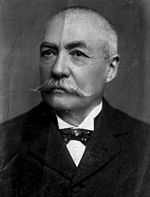
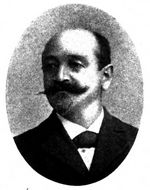
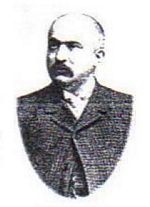
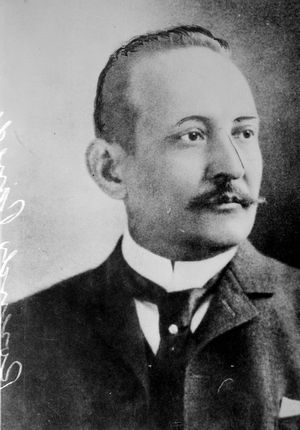 Rosendo Pineda was born in Juchitán, Oaxaca on 3 March 1855. He was a practicing lawyer, and legal counsel to the Banco de Londres y México. He also served as private secretary to Secretario de Gobernación
Rosendo Pineda was born in Juchitán, Oaxaca on 3 March 1855. He was a practicing lawyer, and legal counsel to the Banco de Londres y México. He also served as private secretary to Secretario de Gobernación